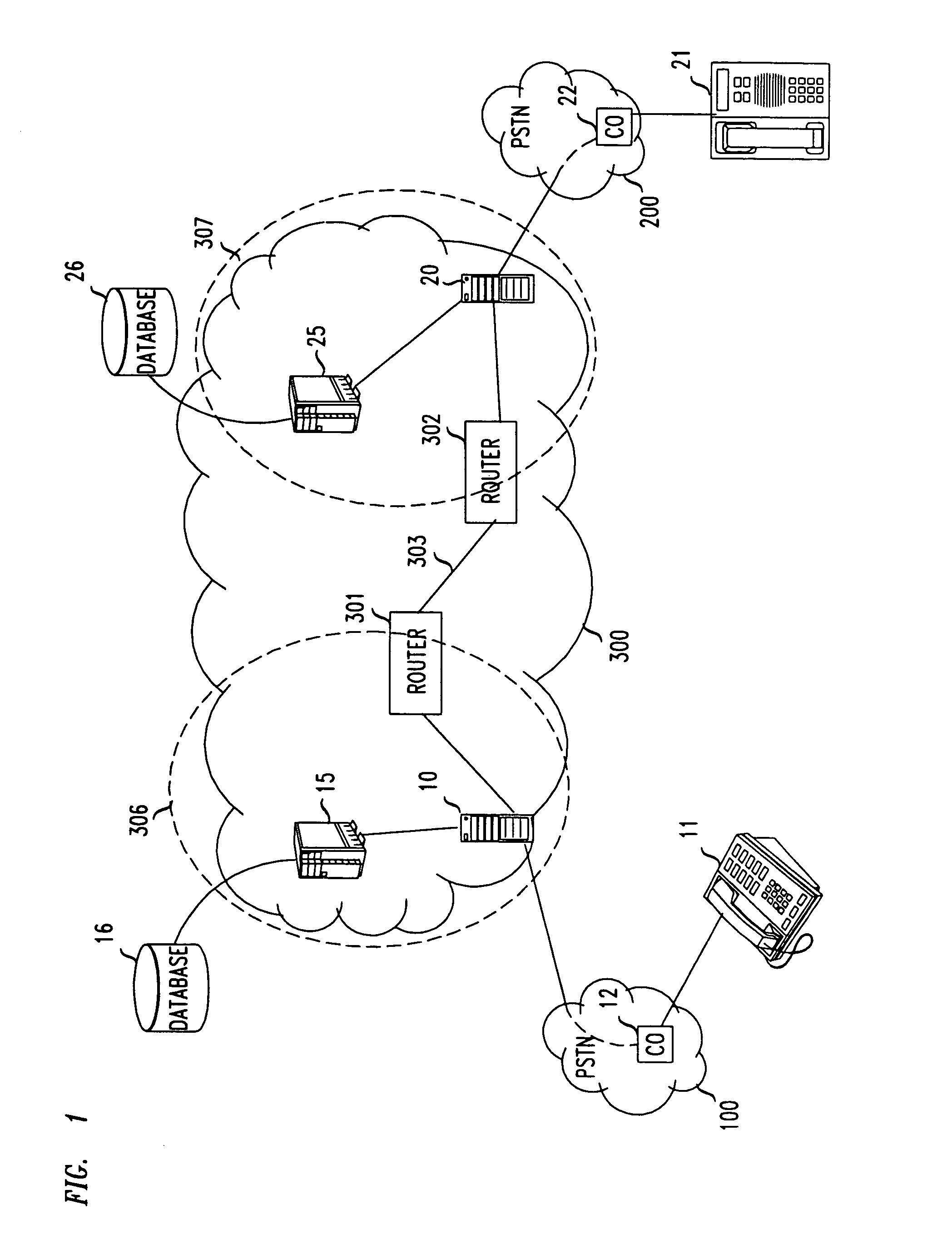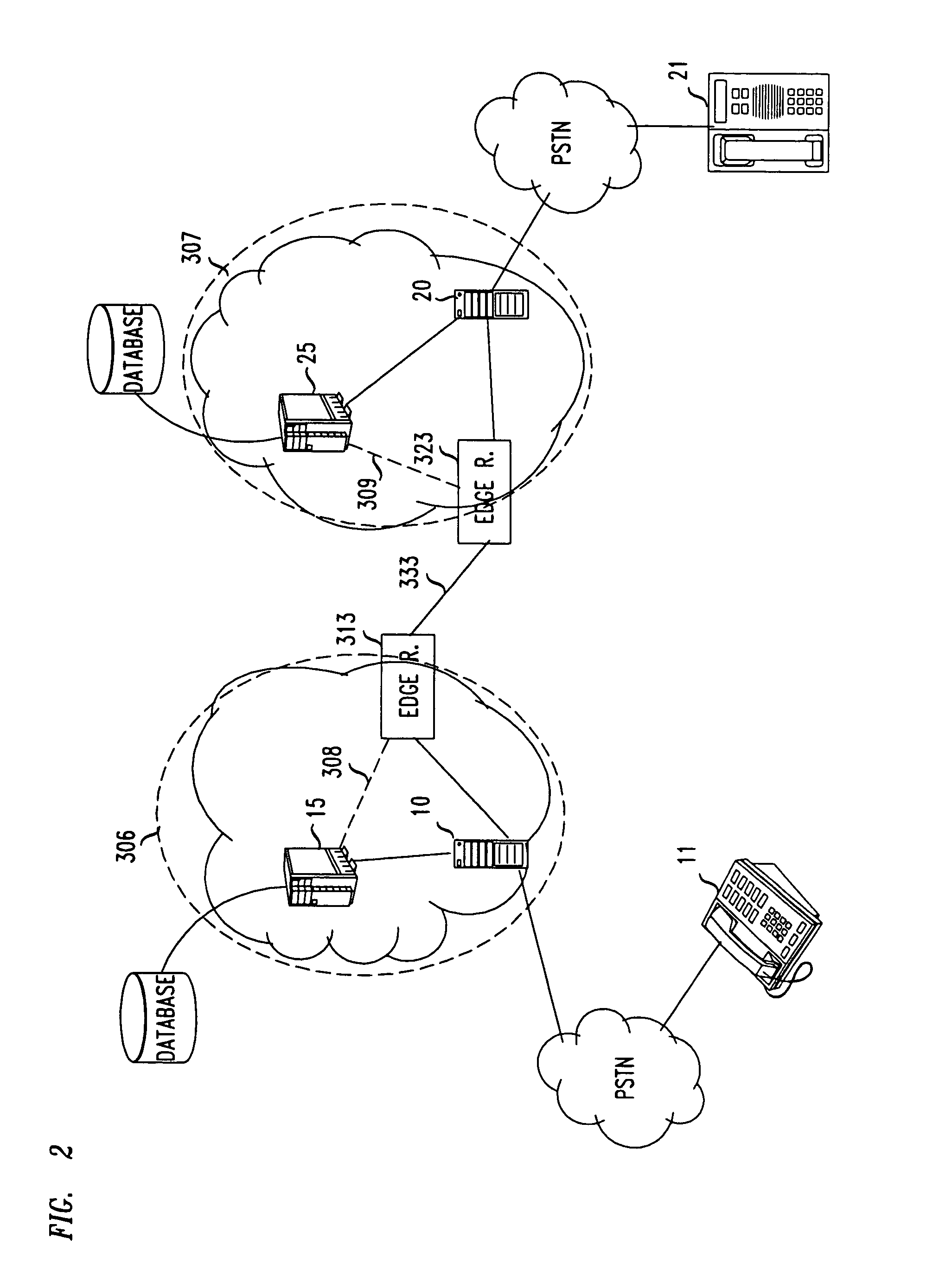Controlled transmissions across packet networks
a packet network and transmission technology, applied in the field of packet communication, can solve the problems of not meeting the network, one or both telecommunication providers might get shortchanged, and add to the complexity
- Summary
- Abstract
- Description
- Claims
- Application Information
AI Technical Summary
Benefits of technology
Problems solved by technology
Method used
Image
Examples
Embodiment Construction
FIG. 3 illustrates a packet network arrangement that comports with the principles of this invention; and with respect to those principles, it is similar to the FIG. 1 arrangement. For illustrative purposes, however, instead of a single network as shown in FIG. 1, FIG. 3 depicts an ATM network 310, and an ATM network 320; instead of gateway 10, PSTN 100 and user 11, there is an MTA 13 that is connected to switch 314 within network 310; and instead of gateway 20, PSTN 200 and user 12, there is an MTA 23 that is connected to switch 324 within network 320.
It is noted that the switches in ATM networks perform essentially the same function as do the routers in IP networks. In this disclosure, therefore, the term “node” is used to subsume both a router and a switch.
For convenience, it may be assumed that MTA 13 is in New York and network 310 is owned by Verizon, that MTA 23 is in Los Angeles and network 320 is owned by PacTel, and that the connection between networks 310 and 320 is eith...
PUM
 Login to View More
Login to View More Abstract
Description
Claims
Application Information
 Login to View More
Login to View More - R&D
- Intellectual Property
- Life Sciences
- Materials
- Tech Scout
- Unparalleled Data Quality
- Higher Quality Content
- 60% Fewer Hallucinations
Browse by: Latest US Patents, China's latest patents, Technical Efficacy Thesaurus, Application Domain, Technology Topic, Popular Technical Reports.
© 2025 PatSnap. All rights reserved.Legal|Privacy policy|Modern Slavery Act Transparency Statement|Sitemap|About US| Contact US: help@patsnap.com



